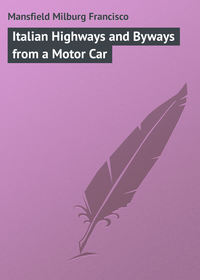Kitabı oku: «Italian Highways and Byways from a Motor Car», sayfa 13
Bir şeyler ters gitti, lütfen daha sonra tekrar deneyin
Türler ve etiketler
Yaş sınırı:
12+Litres'teki yayın tarihi:
16 mayıs 2017Hacim:
253 s. 6 illüstrasyonTelif hakkı:
Public Domain